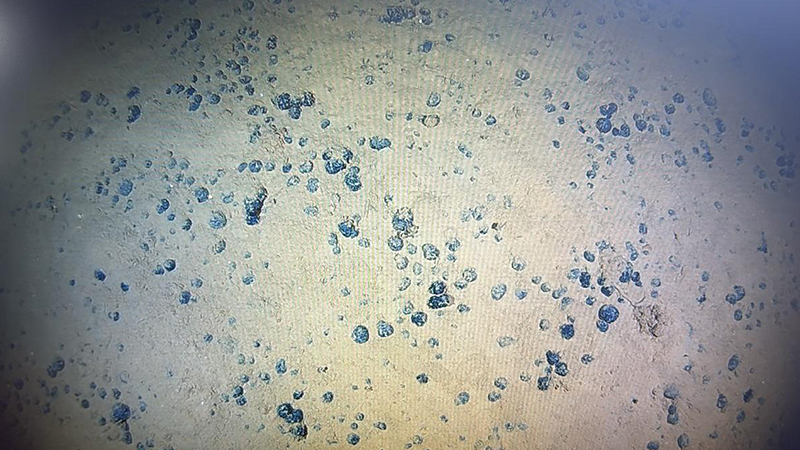New Autonomous Vehicle Helps Advance Understanding of the Deep Ocean and its Critical Minerals

Newly found polymetallic nodules were imaged on the seabed at 5,645 meters (3.51 miles) water depth to the east of the Commonwealth of the Northern Mariana Islands using the Orpheus autonomous underwater vehicle during an expedition on Exploration Vessel Nautilus. Image courtesy of Orpheus Ocean. Download largest version (jpg, 627 KB)
During a recent expedition led by the Ocean Exploration Cooperative Institute (OECI), with support from NOAA Ocean Exploration, the Bureau of Ocean Energy Management (BOEM), and the U.S. Geological Survey (USGS), testing of a new autonomous underwater vehicle (AUV) resulted in advancement to uncrewed systems technologies and the collection of images of manganese nodule-covered seafloor in ultra-deep waters near the Mariana Trench.
Built by New England-based startup Orpheus Ocean , the small-footprint “Orpheus AUV” is advancing our understanding of some of the planet’s least explored regions at water depths up to 11,000 meters (6.8 miles). These areas include geological settings that may contain marine critical minerals such as polymetallic nodules, which are of interest to marine scientists, resource managers, and industry.
Field-testing of the new AUV took place during an expedition on Ocean Exploration Trust’s Exploration Vessel Nautilus east of the Mariana Trench. The vehicle successfully completed several dives to depths exceeding meters (3.5 miles), imaging polymetallic nodules on the seafloor during two dives. These are the first direct observations of these sites and help NOAA, USGS, and BOEM refine their understanding of the resources that they are tasked with characterizing and managing.
During the Mattingan Mariana Arc Volcanic Exploration expedition the team welcomed the Orpheus autonomous underwater vehicle (AUV) from Orpheus Ocean aboard Exploration Vessel Nautilus for the very first time. The Orpheus AUV is built to explore abyssal depths up to 6,000 meters, including being able to access the abyssal plain which has to date been virtually unexplored east of the Mariana Trench. Video courtesy of Ocean Exploration Trust/Nautilus Live. Download largest version (mp4, 59.7 MB)
A predecessor to Orpheus Ocean's AUV was originally developed at the Woods Hole Oceanographic Institution (WHOI), and its evolution from prototype to operational vehicle has been supported over several years by NOAA Ocean Exploration and OECI. Orpheus Ocean, a startup company founded in 2024, aims to expand access to these unique, small-footprint robots to supercharge our ability to collect meaningful data that can ensure sound policy decisions about these unique environments.
Content adapted from a press release issued July 7, 2025, by OECI.
Published July 7, 2025